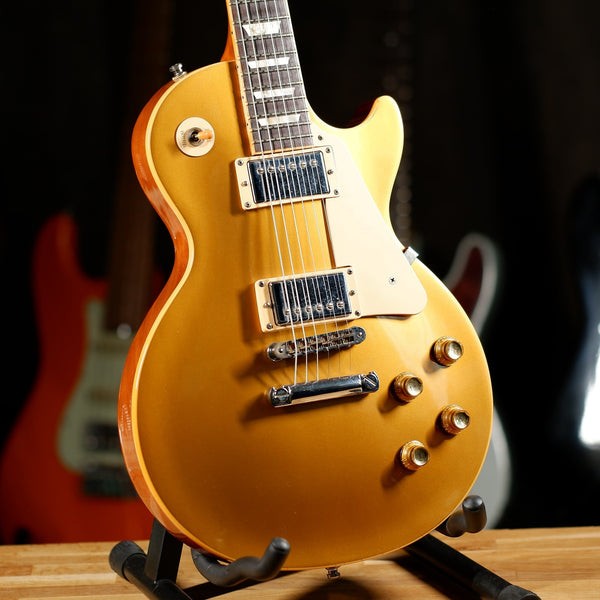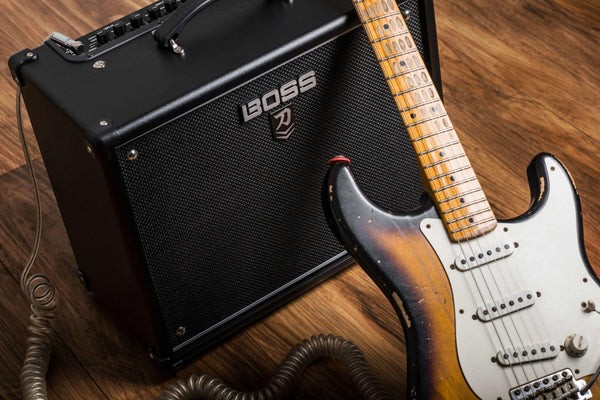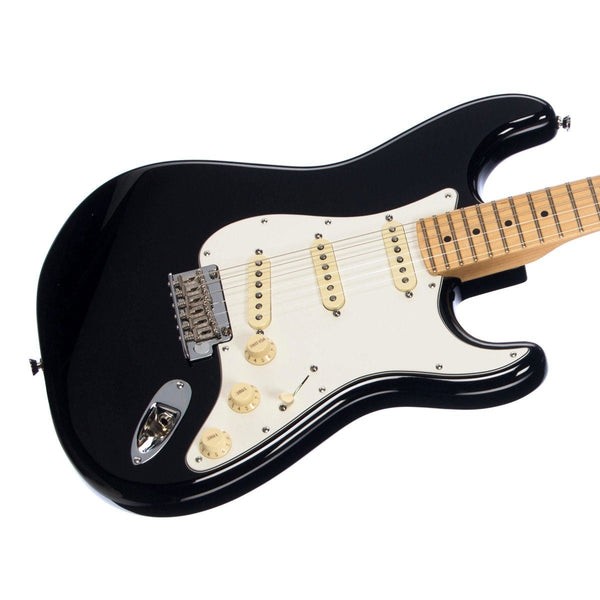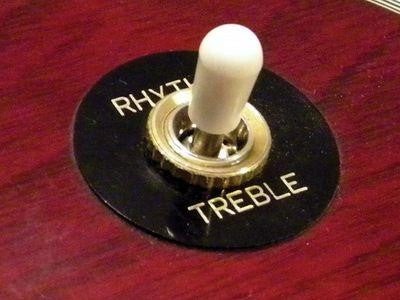How Do You Learn Electric Guitar? Learning to play the electric guitar is an exciting journey, and with the resources available today, mastering this instrument on your own is entirely achievable. LEARNS.EDU.VN is here to guide you through every step, offering structured learning paths and expert insights. Discover how to learn guitar, improve your guitar skills, and unlock your musical potential with our proven methods.
1. Acquiring the Essential Gear
Having the right equipment is fundamental to your success as an electric guitarist. While you don’t need to start with the most expensive gear, selecting suitable instruments and accessories will significantly ease your learning curve.
1.1. Selecting Your First Guitar
Choosing the right guitar is crucial. A well-made guitar that stays in tune can greatly accelerate your learning process. Brands like Fender Squier, Epiphone, and Yamaha Pacifica are known for their reliability and are excellent choices for beginners.
According to a study by the National Association of Music Merchants (NAMM), beginners are more likely to stick with learning guitar if they start with a quality instrument. Investing in a decent guitar will prevent frustration caused by poor sound and playability.
1.2. Amplifiers and Cables
An amplifier is essential for producing sound from your electric guitar, and a reliable guitar cable is just as important. Modeling amplifiers are a particularly attractive option because they offer a wide array of amp simulations. This allows you to explore various tones and styles without breaking the bank.
1.3. Essential Accessories
Don’t forget essential accessories such as guitar picks and a comfortable strap. Experiment with different pick sizes and thicknesses to find what feels best for you. Strap locks are a wise investment to ensure your guitar stays securely attached to your strap, preventing accidental drops.
Guitar picks vary widely, with some being large and others small, some thick and some thin. Finding the right pick can greatly enhance your playing experience.
2. Understanding Your Equipment
Take the time to familiarize yourself with every aspect of your new gear. Studying the manuals for your guitar, amplifier, and any additional equipment will give you valuable insight into how everything works.
2.1. Components of the Electric Guitar
Understanding the components of your electric guitar is key to controlling your sound. Electric guitars typically include a body, neck, frets, strings, pickups, tuning pegs, nut, bridge, and a set of knobs and switches.
Knowing the function of each part allows you to make informed decisions about tone and adjustments. For example, the type of pickups your guitar has significantly affects its sound. Single-coil pickups, common in Stratocaster-style guitars, produce a bright, crisp tone, while humbucker pickups, found in Les Paul guitars, offer a thicker, warmer sound.
2.2. Mastering Toggle Switching and Tone Control
The toggle switch on your guitar allows you to select different pickup configurations, each offering a unique tonal flavor. On a Stratocaster, a five-way switch selects between the neck, middle, and bridge pickups, as well as combinations of these. Les Paul guitars typically have a three-way switch for selecting the neck, bridge, or both pickups.
Using the volume and tone knobs, you can further shape your sound. Blending different pickup volumes allows you to create unique sonic textures.
2.3. Tuning and String Replacement
Learning to tune your guitar is essential. Fortunately, numerous high-quality apps are available for tuning. Clip-on tuners are also a great tool for quick and accurate tuning.
Changing your guitar strings is another important skill. Regular string changes ensure optimal sound quality and playability. Many online tutorials can guide you through the process. Experiment with different string gauges to find the best fit for your playing style. Lighter strings are easier to bend, while heavier strings provide a fuller tone and more stable intonation.
3. Mastering Tabs and Chord Charts
Learning to read guitar tablature (tabs) and chord charts is a quick and effective way to learn songs without needing to read traditional musical notation.
3.1. Understanding Guitar Tabs
Guitar tablature is a simplified way to represent music for the guitar. It consists of six horizontal lines representing the guitar’s strings. Numbers on the lines indicate which fret to play on each string.
Reading tabs from bottom to top, the lowest line represents the low E string (6th string), and the highest line represents the high E string (1st string). The number “1” on the top line means playing the first fret of the high E string, while “5” on the bottom line means playing the fifth fret of the low E string.
3.2. Reading Chord Charts
Chord charts provide a visual representation of chord shapes on the guitar fretboard. They consist of a grid with vertical lines representing the strings and horizontal lines representing the frets. Dots on the grid indicate where to place your fingers to form the chord.
By practicing reading chord charts, you’ll memorize various chord shapes and quickly learn new songs.
4. Leveraging the Internet
The internet offers a wealth of resources for guitar learners. From online lessons to gear reviews, the possibilities are endless. However, it’s crucial to identify reliable and high-quality resources.
4.1. Online Courses vs. YouTube Tutorials
While YouTube offers a vast amount of free content, structured online courses often provide a more effective learning experience. Courses typically follow a well-designed curriculum, offering step-by-step instruction and clear learning objectives.
LEARNS.EDU.VN provides structured courses designed by experienced instructors, ensuring a comprehensive and effective learning journey. A structured approach helps you gauge your progress and avoid the pitfalls of scattered information.
4.2. Structured Learning at LEARNS.EDU.VN
At LEARNS.EDU.VN, we understand the importance of structured learning. Our courses are designed to take you from beginner to proficient, with clear milestones and expert guidance every step of the way.
5. Setting Clear Objectives
Self-motivation and discipline are crucial for learning independently. Setting realistic and achievable goals will keep you focused and motivated.
5.1. Short-Term and Long-Term Goals
Break down your learning journey into manageable steps. For example, aim to learn the five forms of the minor pentatonic scale over five months, dedicating one month to each form.
| Timeframe | Goal | Description |
|---|---|---|
| 1 Month | Master one form of minor pentatonic scale | Focus on finger placement, smooth transitions, and playing in time. |
| 3 Months | Learn basic chord progressions | Practice common chord sequences and transitions between them. |
| 6 Months | Play a simple song | Choose a song that uses chords and scales you’ve learned. |
| 1 Year | Perform in front of others | Aim to play at an open mic night or with friends, building confidence and experience. |






5.2. Establishing a Routine
Consistency is key to success. Develop a solid practice routine and stick to it. Allocate specific times each day for practice, and structure your sessions to include warm-ups, scale practice, chord practice, and song learning.
6. Immerse Yourself in Music
Listening to music is an essential part of becoming a skilled musician. Listening to your favorite guitarists helps you internalize the sounds and styles you want to emulate.
6.1. Engaging with Interviews and Concerts
Listening to interviews with your favorite guitarists can provide insights into their musical approaches. Attending live concerts allows you to experience the energy and nuances of live performance.
7. Mastering Fundamental Skills
Regardless of your preferred genre, mastering basic open position chords, barre chords, and basic major, minor, and pentatonic scale patterns is essential. These elements form the building blocks of guitar technique.
7.1. Playing Chords in All Keys
Learning to play chords in all twelve keys is a valuable skill. The CAGED system allows you to move chord shapes up and down the fretboard, making it easier to play in different keys.
| Chord Type | Description | Benefit |
|---|---|---|
| Major | Chords with a bright, uplifting sound. | Essential for creating happy, positive melodies. |
| Minor | Chords with a darker, more melancholic sound. | Adds depth and emotion to your playing. |
| Dominant 7th | Chords with a bluesy, jazzy sound. | Creates tension and release in chord progressions. |
| Barre Chords | Movable chord shapes that allow you to play any chord type in any key. | Provides flexibility and versatility in your playing. |
| Open Chords | Basic chords played in the open position, easy for beginners to learn and play. | Foundation for learning more complex chords and techniques. |
7.2. Scale Mastery
Similar to chords, learning movable patterns for major, minor, and pentatonic scales allows you to play in any key. Mastering these patterns will unlock your ability to improvise and create your own music.
8. Developing Specialized Techniques
Identify unique techniques used by your favorite guitarists, such as slides, bends, hammer-ons, pull-offs, legato runs, sweep picking, and tapping. Experiment with different picking styles, including alternate picking, hybrid picking, and fingerpicking.
8.1. Learning Songs
Learning as many songs, riffs, licks, and solos as you can is crucial for internalizing the language of the guitar fretboard. By mastering these elements, you’ll develop your own unique playing style.
9. Harnessing the Metronome
Using a metronome can greatly improve your timing and rhythm. A metronome is an invaluable practice tool for developing a solid sense of time.
9.1. Versatile Practice Techniques
Practice with the metronome set to different beats to challenge yourself. Experiment with having the metronome on all four beats, just one beat, or the off-beats.
10. Record and Analyze Your Playing
Record yourself practicing using a voice memo app on your phone. Listening critically to your recordings will help you identify areas for improvement.
10.1. Structured Reflection
Analyzing your playing is a powerful tool for tracking your progress and skills. By being realistic with yourself, you’ll achieve your goals faster.
11. Embracing Music Theory
Music theory provides a framework for understanding the structure and patterns in music. Don’t be afraid to delve into music theory, as it can greatly enhance your understanding and creativity.
11.1. Unleashing Creativity
Many self-taught musicians worry that learning music theory will stifle their creativity. However, the opposite is true. Music theory unlocks a deeper understanding of music, allowing you to express yourself more effectively.
12. Finding Your Tribe
Connecting with other guitarists and musicians is an essential part of the learning process. Engaging with a community will keep you inspired and motivated.
12.1. Online and In-Person Communities
Whether you join online forums or local music groups, having a community of guitarists to interact with will help you develop faster and stay focused.
13. Taking an Online Course
While plenty of free resources are available, enrolling in an online course can provide a structured and guided learning experience.
13.1. Structured Guidance
YouTube can be a great supplement, but it lacks the structure needed for comprehensive learning. An online course offers a curated curriculum, personalized feedback, and a clear path to improvement.
At LEARNS.EDU.VN, we offer comprehensive courses designed to help you progress from beginner to pro. Our courses are structured to provide you with the knowledge and skills you need to succeed.
Ready to take your guitar playing to the next level? Visit LEARNS.EDU.VN today to explore our range of courses and resources designed to help you achieve your musical goals.
FAQ: Learning Electric Guitar
- Is it hard to learn electric guitar?
- Learning electric guitar has its challenges, but with dedication and the right resources, it’s definitely achievable. Start with the basics and gradually build your skills.
- How long does it take to learn electric guitar?
- The time it takes to learn electric guitar varies depending on your goals and practice habits. With consistent practice, you can start playing basic songs within a few months.
- What are the essential skills to learn first?
- Essential skills include learning to tune your guitar, reading tabs and chord charts, and mastering basic chords and scales.
- Do I need to know music theory to play electric guitar?
- While not essential, learning music theory can greatly enhance your understanding and creativity.
- What is the best way to practice guitar?
- The best way to practice guitar is to establish a consistent routine, set clear goals, and use a metronome to improve your timing.
- What are some common mistakes beginners make?
- Common mistakes include not practicing regularly, skipping the basics, and not using a metronome.
- How important is it to find a guitar teacher?
- While not essential, a guitar teacher can provide personalized guidance and feedback. However, with the resources available today, it’s entirely possible to learn on your own.
- What are some good online resources for learning guitar?
- LEARNS.EDU.VN offers structured courses and resources for learning guitar. YouTube and other online platforms can also be helpful, but be sure to choose reliable sources.
- How do I stay motivated to keep learning?
- Set realistic goals, find a community of guitarists, and focus on learning songs you enjoy.
- What should I look for in a beginner guitar?
- Look for a guitar that is comfortable to play, stays in tune, and has a decent sound quality. Brands like Fender Squier, Epiphone, and Yamaha Pacifica are good options for beginners.
At LEARNS.EDU.VN, we’re committed to providing you with the tools and resources you need to succeed in your learning journey. Whether you’re a beginner or an experienced player, we have something for everyone.
Take the next step in your musical journey today! Visit LEARNS.EDU.VN, located at 123 Education Way, Learnville, CA 90210, United States, or contact us via WhatsApp at +1 555-555-1212. Let learns.edu.vn be your partner in mastering the electric guitar.

